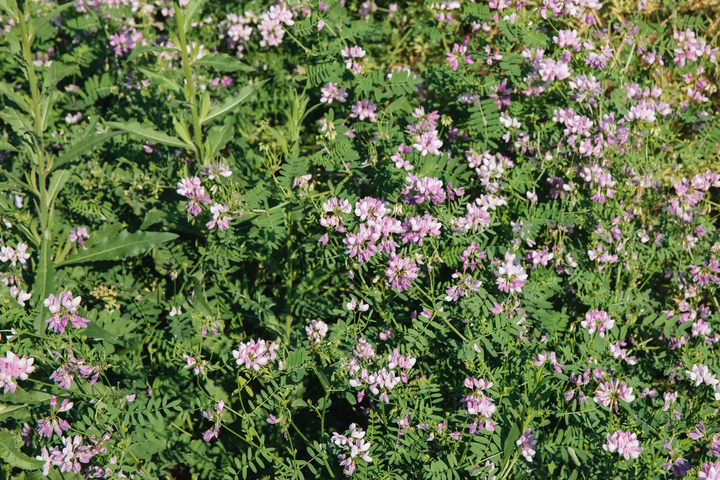Cleomes may not be the most popular annuals sold at home improvement stores and nurseries, and it may be because they look rather weedy as young seedlings in six-packs. Unlike pert marigolds or dazzling New Guinea impatiens, cleomes usually do not start blooming until they are well established in the garden. Once the flower clusters emerge, you will see why gardeners add this to their list of easy-care favorites. Many petals radiate from a central point, forming a cluster, which tends to be softball-sized. Long stamens give the flowers a spiky look. Even the foliage is attractive, as it is fern-like and delicate.
Botanical Name:
Cleome
Common Name:
Cleomes, spider flower, Rocky Mountain bee plant, stinking clover
Plant Type:
Annual
Mature Size:
1.5 to 5 feet tall and 1 to 2 feet wide
Sun Exposure:
Full sun, part sun
Soil Type:
Average, well-drained
Soil pH:
Acidic to neutral
Bloom Time:
Summer
Flower Color:
White, pink, lavender, rose
Hardiness Zones:
10, 11
Native Area:
South America

How to Grow Cleomes
Averaging 3 to 4 feet in height, cleomes provide a welcome tall focal point in the annual garden, where compact bedding plants tend to rule. The pink, purple, white, and lavender flowers complement many garden designs while pleasing visiting pollinators as well. Spider flowers do not emit a noticeable fragrance, yet hummingbirds and butterflies are drawn to these flowers all summer long. An additional unusual but welcome visitor to these flower clusters is the hummingbird moth, which looks so much like a hummingbird as it darts about at twilight you will do a double-take.
Cleome flowers are easy to start in the garden from seed. Perhaps too easy, as the plants can self-seed to the point of being a nuisance. The seeds need light to germinate, so you can just sprinkle them in the garden after the danger of frost is past, and look for seedlings after 10 days. Alternatively, sow them in the autumn, and they will germinate when conditions are just right in your the following growing season.
If you do allow the plants to self-seed, thin the newly emerging seedlings to allow at least 18 inches between plants. This improves the vigor of individual plants, encouraging the most blossoms from each plant. If you want to limit cleome’s self-seeding habit, spend time each week plucking the long seed pods that form under the flowers throughout the season.
Once started, the plant seems to take care of itself. What is more, the upright stalks need no staking. This plant shrugs off pests and diseases.
Light
Cleome flowers grow best in full sun, as shady conditions can make them grow so tall as to topple over. If you start with transplants, you will see blossoms from early summer until the first frost. Gardeners growing cleome flowers from seed usually see their first flowers in mid to late June, depending on the climate.
Soil
Cleomes do best in average garden soil or rich well-drained garden loam.
Water
Once established, cleomes are drought-tolerant, making them a welcome addition to the xeriscape garden. Add a 3-inch layer of organic mulch to their planting bed, and you will decrease their water needs even further.
Temperature and Humidity
For successful germination, cleomes need higher-than-normal temperatures. Fluctuating day/night temperatures are essential for optimum germination. During the day, temperatures should range from 80 to 85 degrees Fahrenheit; nightly temperatures should stay between 68 and 70 F. The humidity should be from 90 to 100 percent. As the plant grows, the temperatures can be lower, from 75 to 80 F during the day and 60 to 65 F at night. Cleomes are not frost-tolerant.
Fertilizer
If using good well-drained soil and mulch, no fertilizer is necessary.
Propagating Cleomes
To grow cleomes from seeds, cultivate the bed as deeply as possible, break up the clumps, and rake smooth. Then take a hoe, and dig small holes 4 feet apart in all directions. If planting in rows, alternate the holes so that those of the second row fall in between those of the first row.
Drop about six seeds into each hole and cover with a quarter-inch of soil. Plant the seeds as early as the ground can be worked in spring. Plant directly outdoors, no cold frame is necessary. Do not worry about frost. The seeds will germinate only after the weather warms. Should the ground freeze again after planting, no harm will be done.
Many gardeners plant their cleome seeds in late fall in the beds where they are to grow, eliminating that part of spring work. However, when planting seed directly out in the landscape garden, wait until the last danger of frost passes before sowing seed.
Growing in Containers
You can grow cleome in large containers, but choose a compact variety like the 'Sparkler' series for best results. Combine your potted cleomes with a mounding flower like vincas and a trailing flower like petunias for the most full and lush look.
Landscape Uses for Cleomes
Cleome flowers are excellent candidates for the back of the flower border, where their lanky stems can hide behind other plants, but their festive flower clusters can sway in the breeze above other flowering annuals. Plant cleomes in clusters of five plants or more to avoid the "soldiers-in-a-row" visual that single plants suggest.
The casual form of cleomes makes them well-suited to the cottage garden or naturalized meadow. Mix cleomes with zinnias, cosmos flowers, black-eyed Susans, salvia, or celosia. These plants all thrive in the same sunny conditions and moderate irrigation that cleomes love.